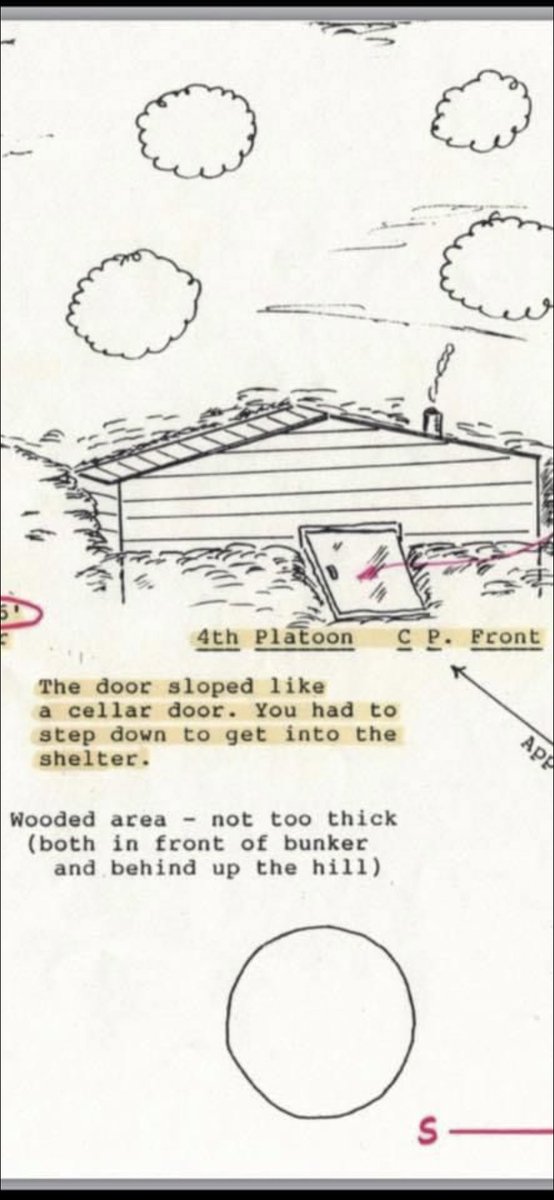
Staying on the Battle of Breville theme, the 9th Battalion had running battles for the Chateau St Come over the coming days since they arrived on 7 June. On the evening of 10 June '44, 5th Black Watch of the 51st Highland Division had arrived at the sunken lane. 

The 51st Highland Div had come up onto the Breville Ridge to support the 6th Airborne Div. The 5th Black Watch would look to close the Breville Gap with an attack. 

At around 0300hrs on the 11 June a patrol from 5th Black Watch passed through the crossroads at Breville. They reported back on limited contact and believed it was not strongly held. They did not enter into Breville to confirm this. Map- Remonter le temps 1950-60, Google SV. 



The patrol reported back to Colonel Thompson who decided that he would mount an attack on Breville at 0430hrs. This would come from the sunken lane and across the fields. 

You can see from the previous photograph, the first 100-200 yards at the higher end of the field has cover from a blind crest, once over the ground drops away down to the Breville crossroad. The lower side then has a steep rise up into Breville from the valley. 

Dan and Lawarence looking out from the sunken lane towards Breville, the crest visible to the right. The 5th Black Watch left the Sunken Lane and formed up ready for the attack and formed up in open order at 0430hrs. 

Here is a comparison between the old hedgerows of 1950-60, same as in '44 compared to todays view. A company had the hedge at the top of the crest for cover until they breached through. This would be a firm base. 



The advance took place into these fields, the furtherst positions that they managed to reach as the Germans opened up from Breville. 63rd Medium Regiment RA had put a 10 minute barrage down onto the crossroads area prior to the advance but clearly did not have the desired effect. 

The men of the 9th Battalion in the sunken lane were also unable to support with direct fire as the 5th Black Watch were making a frontal assault, so little support could be offered. 

For A Coy, 5th Black Watch, they split and sent 7 Platoon forward on its own with 8 & 9 Platoon holding back supporting with MG and Mortars. This possibly does reduce casaulties in doing this. A Coy were becoming quickly decimated. Its at this point B and C Coy were sent to try. 

As A coy continued to take casaulties, B and C Coy on the left flank tried to come up from the road towards the crossroad. They to take many casaulties and eventually the attack is called off and 5th Black Watch withdraw at 0900hrs. 

From the sunken lane, Cpl Corboy of the 9th Battlaion recalled seeing jeep after jeep returning with dead bodies. These were taken to the temperary cemetery between the bungalow and toolshed at the Bois de Monts. 

Then and now of the temporary cemetery within the ground of the Bois Des Monts Bungalow where men of both the 9th Battalion and 5th Black Watch would be buried. Now most are at rest at Ranville cemetery.
Archive Photo- The Day the Devils Dropped in- Neil barber

Archive Photo- The Day the Devils Dropped in- Neil barber


Within the toolshed in the bungalow grounds, on the wall, chalk markings are present listing the name of men who were possibly wounded and recieved treatment. This bungalow is privately owned and the grounds should not be accessed without consent. 

Next to the Sunken Lane and the entrance to the bungalow is a memorial to the 51st Highland Division and remembering the men of the 5th Black Watch who took part in the failed attack suffering over 200 casualties. 

The Black Watch and the 51st Highalnd Div did come into criticism for their performance in Normandy and for this attack at Breville, Col Otway of the 9th Battalion had strongly advised them not to carry this out on the 11 June. 

For anybody visiting Normandy I strongly advise you to spend time up on the Breville Ridge, an important part of the battlefield. I'd also suggest getting copy of 'The day the Devils dropped in' by @Barber1944. He has been a huge help with my understanding and research. 

• • •
Missing some Tweet in this thread? You can try to
force a refresh



















